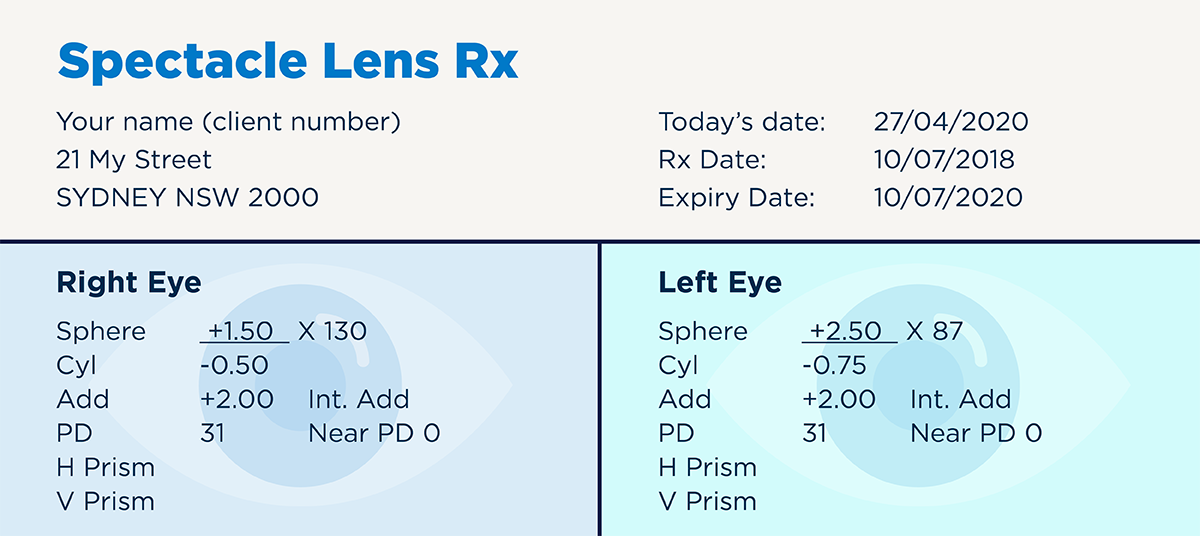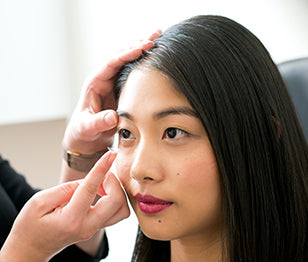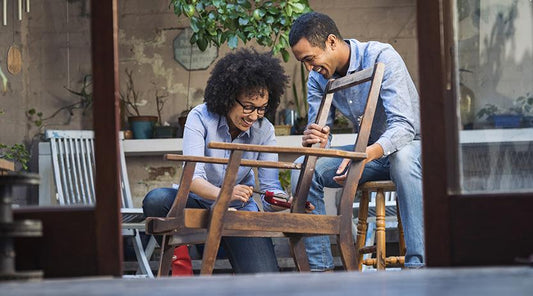Making sense of your prescription

It’s easier than ever to buy new glasses or contact lenses – especially if you understand your prescription.
We’re here to help break down the numbers and acronyms that make up your prescription, so you know what’s what when it’s time to re-stock your lenses.
Your prescription explained

Right and left eye
You might need a different lens for each eye – so your prescription has a column for both. They might have any of the following names or acronyms:
RE, R or OD for your right eye
LE, L or OS for you left eye
SPH (or sphere)
See a plus sign in front of the number here? It means you’re long-sighted (or you have trouble seeing things up close, like when you’re reading). If a minus sign is there it’s because you’re short-sighted (or having trouble seeing things far away).
The higher the number in this column, the stronger your lens prescription needs to be.
CYL (or cylinder)
You’ll see a number in this column if you have astigmatism, where your cornea is more of an oval shape than a sphere. The higher the number here, the more significant your astigmatism is.
Axis
This measures the orientation of astigmatism in degrees (from 0 to 180). It shows how your lens should be positioned to correct your astigmatism.
ADD
The Add or Near Add means additional power that’s added onto the sphere power for reading prescriptions (if you need it).
Prism
You might be prescribed prism if your eyes aren’t working as a team. It re-directs light to the right part of your retina to help with double vision, eye strain and headaches.
PD (or pupillary distance)
This is the distance (in millimetres) from the centre of one pupil to the centre of the other. If it isn’t already on your prescription, here’s how you can measure it yourself:
- Find a ruler that can measure in millimetres
- Stand in front of a mirror, close enough to read the measurements.
- Rest the ruler on your nose and line up the 0 on the ruler to the outer edge of your left pupil. The outer edge is closest to your ear.
- Holding the ruler steady, find the number that aligns with the inner edge of your right pupil. The inner edge is closest to your nose. Your PD should be between 55 and 70 for most adults.
- Check the measurement a few times to ensure it is accurate.
Wearing contact lenses as well?
If so, you’ll need a separate prescription, as contacts sit directly on your eye. A contact lens prescription is usually written sometime after your glasses prescription, and you’ll probably need a few visits to make sure the fit’s correct, your vision is good and you’re comfortable.
We’ve explained a few extra terms relating to your contact lens prescription below.
BC (Base curve)
If your prescription includes this measurement, it’s used to describe the curvature of your lenses in millimetres.
DIA (or diameter)
This describes the size across the lens – but like the Base curve measurement, it might not be included.
Know when it’s time to get re-tested
Prescriptions expire, so it’s important to keep track of the date you should come back for another test. Regular and comprehensive eye exams don’t just keep your prescription up-to-date – they help you stay on top of your eye health as well.

Thinking about getting contact lens?
You can get started by booking in for a contact lens fitting appointment. We’ll give you a comprehensive eye test and check to see if contacts are right for you.
You might also like to read...
View all-
Do I need an eye test?
Having regular eye tests can help identify and solve any vision problems, and they're a great way to get ahead of any underlying issues.
Eye testDo I need an eye test?
Having regular eye tests can help identify and solve any vision problems, and they're a great way to get ahead of any underlying issues.
Read more -
What should I expect during my eye test?
When you first have an eye test, your optometrist will get the lowdown on your eyes, vision, health and lifestyle in order to tailor the test to you.
Eye testWhat should I expect during my eye test?
When you first have an eye test, your optometrist will get the lowdown on your eyes, vision, health and lifestyle in order to tailor the test to you.
Read more -
Eye tests and out-of-pocket expenses
Worried about the costs of getting your eyes tested? We’ve got good news. They’re usually bulk-billed if you’re covered by Medicare.
Eye testEye tests and out-of-pocket expenses
Worried about the costs of getting your eyes tested? We’ve got good news. They’re usually bulk-billed if you’re covered by Medicare.
Read more





